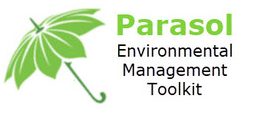Implementing an Environmental Management Toolkit is a proactive step towards integrating sustainable practices into an organization’s operations. However, successful adoption of the toolkit requires careful planning and execution. In this blog post, we will discuss the key steps involved in implementing an Environmental Management Toolkit, enabling organizations to effectively integrate environmental management practices and achieve their sustainability goals.
Assessing Organizational Needs and Objectives
Before implementing an Environmental Management Toolkit, it is crucial to assess the organization’s specific needs, objectives, and current environmental performance. This blog post will explore the importance of conducting a comprehensive review to identify areas for improvement and set clear sustainability goals. It will discuss how organizations can align their environmental management objectives with their overall business strategy, ensuring a strategic approach to sustainability.
Selecting the Appropriate Toolkit
The market offers a range of Environmental Management Toolkits with varying features and resources. This blog will guide organizations in selecting the most suitable toolkit based on their industry, size, and specific requirements. It will discuss considerations such as toolkit compatibility with existing systems, user-friendliness, available support, and cost-effectiveness. The blog will emphasize the significance of choosing a toolkit that aligns with the organization’s goals and can be effectively integrated into its operations.
Building Internal Capacity and Awareness
Successful implementation of the toolkit requires building internal capacity and fostering environmental awareness among employees. This blog post will discuss the importance of providing training and resources to enable employees to effectively use the toolkit. It will highlight the need for education on environmental best practices, policies, and procedures. The blog will emphasize the role of leadership in promoting environmental awareness and engaging employees in sustainability initiatives.
Integrating Toolkit into Work Processes
To maximize the impact of the Environmental Management Toolkit, organizations need to integrate it seamlessly into their work processes. This blog will explore strategies for integrating the toolkit, such as incorporating environmental considerations into decision-making processes, incorporating toolkit resources into standard operating procedures, and establishing clear responsibilities for toolkit usage. It will discuss the benefits of integrating the toolkit into everyday work routines, ensuring its practicality and effectiveness.
Monitoring Progress and Continuous Improvement
Implementing an Environmental Management Toolkit is an ongoing process that requires monitoring progress and continuously improving environmental performance. This blog post will emphasize the importance of establishing key performance indicators (KPIs) and implementing monitoring mechanisms to track the organization’s sustainability progress. It will explore how organizations can leverage the toolkit’s monitoring and reporting features to assess performance, identify gaps, and implement corrective actions. The blog will highlight the significance of a continuous improvement mindset for long-term sustainability success.
Conclusion
Implementing an Environmental Management Toolkit is a proactive approach towards integrating sustainable practices into an organization’s operations. By following the key steps outlined in this blog post, organizations can effectively adopt the toolkit and enhance their environmental management practices. From assessing needs and selecting the appropriate toolkit to building internal capacity, integrating it into work processes, and monitoring progress, successful implementation sets the foundation for achieving sustainability goals and contributing to a greener future.



